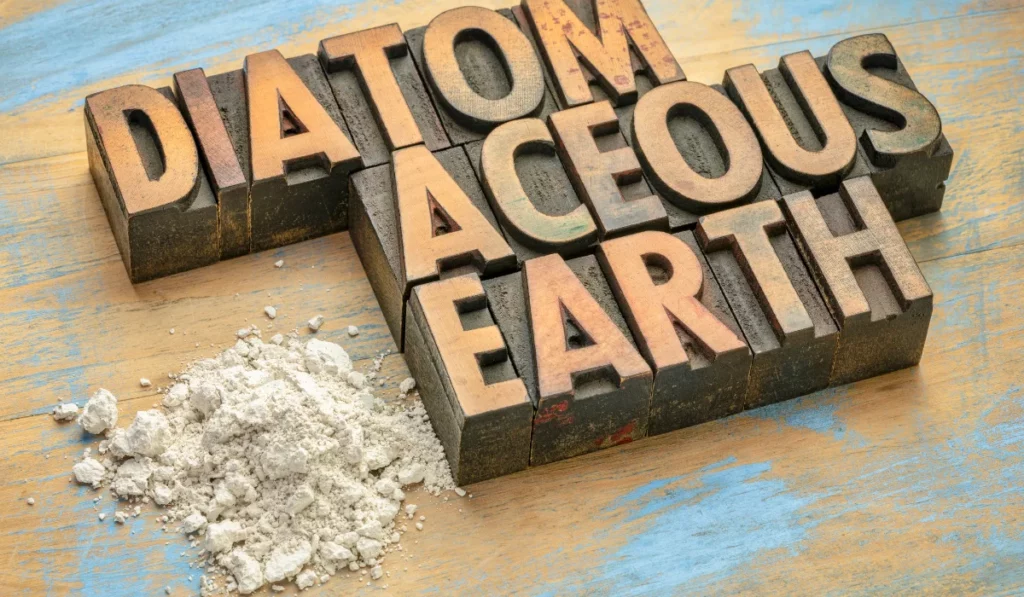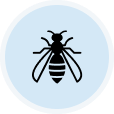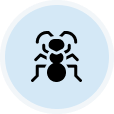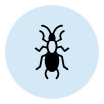Could tiny fossils stop a bed bug infestation in its tracks? Diatomaceous earth powder, a natural substance made from the remains of tiny aquatic organisms, is attracting attention for its potential as a bed bug killer.
This powder can be sprinkled around cracked floors, bed frames, and other areas to tackle these pests without harsh chemicals. Keep reading and discover how it could end your bed bug woes.
Key Takeaways
- Diatomaceous earth works by drying out bed bugs when it damages their outer layer.
- A light layer of food-grade diatomaceous earth should be applied in areas where bed bugs hide.
- Diatomaceous earth needs to be applied often and directly to bed bugs, so it takes longer to work than other methods.
- Professional pest control may be needed if the infestation spreads or keeps coming back.
Can Diatomaceous Earth Kill Bed Bugs?

Diatomaceous earth is a fine powder of crystalline silica or silicon dioxide made from tiny fossilized aquatic organisms called diatoms. It is often discussed as a DIY method for bed bug control due to its physical rather than chemical properties.
It can target bed bugs by damaging their waxy outer coating, which leads to dehydration. Due to its lack of harsh active ingredients and low toxicity, DE is a popular choice in pest control.
When considering its effectiveness across various life stages, DE can target adult bed bugs, nymphs, and bed bug eggs. With its desiccant properties, the exoskeletons of these pests get compromised on contact.
How to Use Diatomaceous Earth to Kill Bed Bugs
When targeting bed bugs, food-grade diatomaceous earth is safe for home use. Unlike pool-grade, it does not contain additives harmful to humans and pets when inhaled.
Where to Apply Diatomaceous Earth for Bed Bugs
Since diatomaceous earth works in direct contact, apply a thin layer in areas where bed bugs hide. This includes crevices, baseboards, windowsills, and voids. Also, pay special attention to the bed frame and box spring. By targeting these areas, you disrupt their habitats.
When applying around electrical outlets, make sure of safety by using a duster to the surrounding area without overloading the powder inside the outlet.
How Much Diatomaceous Earth to Use for Bed Bugs
A little goes a long way for this insect control. Use a duster to disperse a light layer across surfaces, focusing on spaces where these pests live.
Avoid piling or clumping the food-grade DE, as it loses effectiveness when applied too thickly. Coverage should appear like a dusting of flour.
Pros and Cons of Using Diatomaceous Earth for Bed Bugs
Choosing diatomaceous earth to tackle bed bugs offers a mix of advantages and disadvantages. It effectively targets pests while raising concerns about cleanup and application.
Benefits of Using Diatomaceous Earth for Bed Bugs
Choosing diatomaceous earth as part of your bed bug control strategy offers several key advantages. Here’s why many people prefer this natural alternative:
- Safe for use around pets and people due to its non-chemical nature
- Dehydrates and kills bed bugs by damaging their exoskeleton
- Food-grade availability, making it suitable for indoor use
- Compatible with other bed bug control methods as part of a comprehensive strategy
- Serves as a preventive measure, helping reduce future infestations
- Reduces chemical exposure for individuals seeking a safer alternative
Drawbacks of Using Diatomaceous Earth for Bed Bugs
While diatomaceous earth has its advantages, there are certain limitations that users should be aware of when considering it for bed bug control:
- Requires bed bugs to crawl directly through the powder for it to be effective
- Demands thorough and repeated application, especially in cracks and crevices
- Time-consuming and labor-intensive to apply it properly
- Cleanup can be difficult, as the fine powder easily scatters
- Potential lung irritation if the powder is inhaled over time, even if food-grade
- Not a hassle-free solution, which may deter users looking for convenience
Should You Consider Professional Pest Control?
When bed bugs have spread through various parts of a home, DIY methods might fall short. Professional pest control services have specialized equipment and methods to handle massive infestations efficiently. This can save time and potentially reduce the chances of a recurring problem.
Besides bed bugs, do you need help with other critters, such as cockroaches, fleas, and termites? Visit our website today for a free estimate!
 1st pest control service just $49. Must schedule service online.
1st pest control service just $49. Must schedule service online.






 You’re supporting a small, local business
You’re supporting a small, local business


